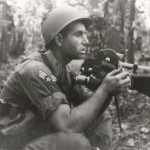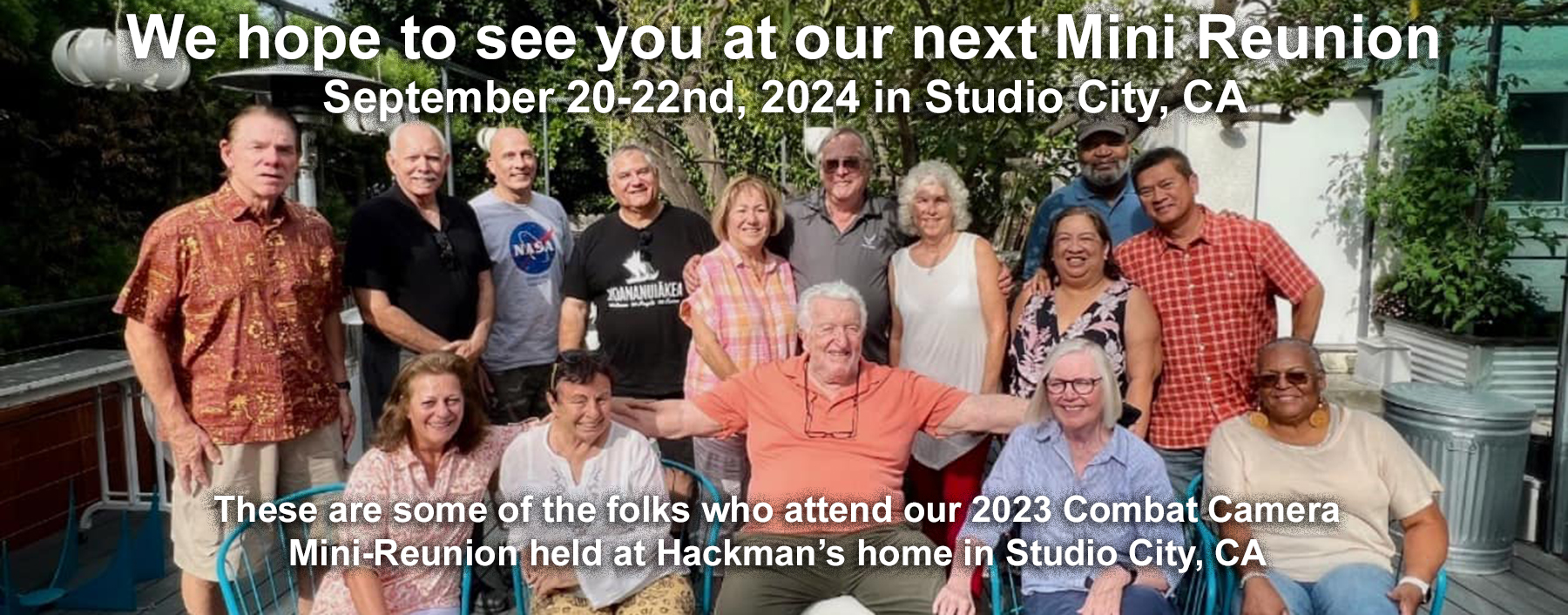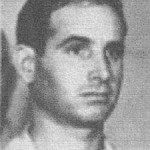Birth: Mar. 6, 1939, Stanislaus County, California, USA
Death: Jul. 19, 1966, Vietnam
A1C Air Force Darryl Gordon Winters.
Airman First Class Winters was a member of the 600th Photographic Squadron. On July 19, 1966, he was a passenger in a North American Super Sabre Fighter (F-100F) making a strafing pass near Tan An, Long An Province, South Vietnam, the aircraft was hit by hostile fire and crashed. His remains were not recovered. His name is inscribed on the Courts of the Missing at the Honolulu Memorial.
You may be gone, no longer living on this earth; but you will live on – in the memories of your family and friends. There will always be a part of you living in those who knew you. You will live on because we remember you!
Marital Status: Single – Ex-Wife, Bonnie Smith and Daughter, Wendy R. Winters, of San Francisco, CA. Parents, Father, Sidney Winters of San Francisco, CA. and Mother, Dorothy Gimblin Lytle of Alameda, CA.
The photo is Darryl with the 5th Battalion, Royal Australian Regiment during Operation Hardihood in Phuoc Tuy Province, Vung Tau, RVN 24 May – 4 June, 1966 shortly before his death. Darryl and I shared some life in ‘Nam in ’66. He was on his 302nd mission when his aircraft, an F-100F, serial number 58-1217, was shot down. His body was vaporized on impact at over 300mph. Remembering our long talks together I feel that his last words may have been “WOW! WHAT A HELL OF A RIDE!”.. Darryl was like that.
He was awarded the Distinguished Flying Cross, the Bronze Star(For Heroic Achievement on Sunday, May 16, 1965), eleven Air Medals, and the Purple Heart. He lives on with the “Darryl G. Winters Award” given annually by the Air Force to its best AAVS member. Even after 41 years .. in my brain I see his face again.
Denny Lewis – HE WAS A FRIEND OF MINE
Length of service 4 years
His tour began on Jul 19, 1966
Casualty was on Jul 19, 1966
In BIEN HOA, SOUTH VIETNAM, HOSTILE, FIXED WING – CREW, AIR LOSS, CRASH ON LAND
Body was not recovered
Panel 09E – Line 44
Vietnam Wall Panel coords 09E 044
“It is in Gordon Winter’s honor that Air Force Photography’s most prestigious award has been named; the Darryl G. Winters Award and is presented annually to the outstanding photographer from the fields of still, motion picture, and video.”
On 19 July 1966, A1C Wnters was assigned to photograph a combat mission and flew in one of the F-100s assigned an interdiction mission. He flew with Captain John R. Bottesch of Munhall, Pennsylvania who was assigned to 90th Tactical Fighter Squadron, 3rd Tactical Fighter Wing at Bien Hoa Air Base.
 When the F-100 was making a strafing pass over a target in Long An Province near the city of Tan An, it was hit by hostile ground fire and crashed just short of the target area.
When the F-100 was making a strafing pass over a target in Long An Province near the city of Tan An, it was hit by hostile ground fire and crashed just short of the target area.
Winters is believed to have been killed in the crash of the aircraft, but there is no indication of the fate of the pilot in Air Force summaries of Winters’ loss incident.
A1C Winters was just beginning his second tour in Vietnam at the time of his death. “He was on his 302nd combat mission. 217 in the backseat of an F-100.
He had been awarded the Bronze Star for his actions on 16 May 1966 when a Viet Cong attack destroyed 13 aircraft and killed 30 servicemen (at Bien Hoa AB). He held the Air Medal with 12 Oak Leaf clusters, ” according to the Oakland Tribune of 3 August 1966.
He was posthumously awarded the Distinguished Flying Cross.
From Air Force Magazine
Valor: The Film of War
BY JOHN L. FRISBEE
CONTRIBUTING EDITOR
A1C Darryl Winters was one of the first and most heroic Air Force combat photographers in Vietnam.
It was inevitable that the airplane and the camera would be teamed to reach that long-elusive goal of military commanders–rapid, detailed information on distant enemy forces. Even before USAF’s earliest progenitor, the Aeronautical Division of the US Signal Corps, was created in 1907, a young Signal Corps officer, Capt. Billy Mitchell, was experimenting with kite-borne cameras.
As aeronautical and photographic technology advanced, the uses of aerial photography expanded beyond reconnaissance to include documentation of combat operations for tactical evaluation and training purposes. That function became the mission of Military Airlift Command’s Aerospace Audiovisual Service (AAVS). Early in the Vietnam War, AAVS “backseat” motion picture photographers were sent to Southeast Asia to cover air operations. Before the war ended, 12 AAVS combat photographers had lost their lives in line of duty.
One of the early backseaters was A1C Darryl G. Winters, who was assigned to the 600th Photographic Squadron at Tan Son Nhut AB in January 1965. For the next 18 months, Winters served with the squadron’s detachment at Bien Hoa. At that time, there were fewer than a dozen Air Force combat photographers in Vietnam.
Winters flew his first combat mission four days after he reported for duty. According to his detachment commander, 1st Lt. Douglas Burrows, Winters was “a top-notch motion picture man” who would rather fly than eat.” At the end of his 12-month tour of duty, Winters had flown through enough enemy ground fire and seen enough aircraft shot down to have a firm understanding of the hazards of tactical operations. Nevertheless, he asked to extend for an additional 12 months.
As his 18th month in Vietnam approached, Winters had flown more than 300 missions–nine over North Vietnam–most of them in F-100Fs, Winters’s favorite aircraft. He had earned a reputation as a superb photographer and as a man who would volunteer for any dangerous mission.
Winters also covered air strikes from the ground, accompanying Army units on search-and-destroy forays. And in May 1965, when a series of explosions on the ramp at Bien Hoa destroyed 13 aircraft and killed 30 Americans, Winters was one of three AAVS cameramen who went into the blazing area to film the disaster. For that action, he was awarded the Bronze Star. Here was a young man with a sense of mission and a belief in the importance of his work.
By July 19, 1966, Winters had earned 11 Oak Leaf clusters to his Air Medal and had taken 30,000 feet of combat film that was used for tactical and intelligence evaluation of air strikes. Because of the quality of his photography, much of the footage was cleared for use by the news media. On that day, the 27-year-old Winters volunteered to film a strafing attack on a Viet Cong position in a well-defended area a few miles west of Saigon. It was his 217th mission in the backseat of an F-100.
A few days earlier, he had commented that he had more missions in the Super Sabre than most of the pilots he flew with. “I’m so accustomed to the cockpit of the plane,” he said, “that I sometimes feel I could take over the controls and fly it myself.”
He never had a chance to find out. The F-100 was hit by ground fire and crashed in the jungle. Winters was the first AAVS combat photographer killed in action in Vietnam.
Winters was awarded the Distinguished Flying Cross posthumously for his extraordinary achievements in an assignment that combined the high risks of tactical air operations and the perils of jungle warfare. By the nature of their duties, combat photographers and their peacetime counterparts in AAVS have to be where the action is, though their acts of heroism are sometimes obscured by the more spectacular work of the aircrews whose operations they record on film. That should not be.
In 1968, AAVS established the Darryl G. Winters Award, which is presented annually to an AAVS member in recognition of outstanding achievement. Winters’s unique combat career remains an inspiration, particularly to those in his field, and still another demonstration that valor and dedication to duty know no bounds of age, rank, or professional duties.
Published July 1987.



I knew Darryl and often shared a beer with him at Bien Hoa. His hooch was kitty corner from mine near the flight line. I worked in the Bien Hoa control tower during my time there and got to work just after he crashed. I remember a night that we drank beer out’a my bush hat because my wife just gave birth to our daughter. He shook every guy’s hand in the airman’s club that night.
I’ve written a story about Darryl and our friendship while we both were at Bien Hoa that will be published by Amazon hopefully in a few weeks. The name of the story is simply “Darryl”.
The CMSGT could have been CMSGT Adolph Paoli. Chief Paoli was an awesome boss and individual. I was a DOC cameraman and good friend of Darryl in the DOC section and later followed him to Vietnam where we flew in the F-100F together at Ton Son Knut and Bien Hoa. We were flying and swapping back seat mission at Ben Hoa when I was sent to start-up a detachment at Cam Ranh Bay flying in the F-4C. Though Darryl was senior I was selected for Cam Ranh because I had been checked out in the F-4C and Darryl wasn’t. A few days later I returned from a mission and was told that Darryl had crashed. I was designated to return to CONUS with his body but his body was never found. Darryl was my best friend at VAFB and Vietnam. Formerly A1C H.W. “Huck” Finn
Darryl Winters,
He was a wild man. He was my first roommate along with Joe Ferrier- my other roommate. I was an 18 year old Airman and I slept in the top bunk over him. I have often heard the line- I want to slide into home base with all my parts used up. That was Darryl- he lived his life hard. I recall one Friday night when Darryl came in around 2AM in the morning and tore the sliding doors off the room locker I shared with him. That was after he turned the ceiling light over my face. Joe and I finally got Darryl into bed and spent the rest of the night fixing the locker for morning inspection. When my mother had a stroke- I left Vandenberg – Darryl treated me to a meal at the cafeteria-our last time together.
It soon after I had arrived for duty as a motion picture cameraman at Vandenberg AFB in 1966 that word came of Daryl’s death. I had never met him personally of course, but he has been an inspiration in my career as a cameraman, both Air Force and as a civilian. When my wife and I visited the Vietnam Memorial in Washington DC in 1996, I located Daryl’s engraved name on the wall. I cried.
Frank…
I saw your response regarding Darryl Winters…I often wonder what happened to people I served with at VAFB, 1369th…
Don’t know if you recall me but as I recall you may have served on Don Sailor’s crew but not sure. I was on Jim Morr’s crew. I kept in touch with Jim until he died, visited him in Lompoc a few times.
I keep in contact with Terri Fergus & David Maddox. I would love to hear where your life progressed, you mentioned doing civilian film work.
Hope to hear from you,
Bill Murphy
I was told that the body of Darryl Winters was found??!
I was in Da Nang RVN July 68-July 69 with Det 7,600 Photo Sq.
I never meet Darryl but heard about his heroic accomplishment serving our nation.
I’ve not heard that. Any idea how to verify it?
Bill this Joe Bowen and I was Titless Waf for Sgt Mowery in 1369 motion pic lab. Stayed in touch with Mowery until his death. Stay in touch with Jack Tucker who teaches editing at UCLA Long Beach. Jack was in Vietnam 1967. I was at Vandenburg may 63 to Jan 67. Live in Eastern, KY. Good memories at vafb. Knew Darrel.
Anybody got as list of who the DG Award winners were ? I got the Award in 1979. Jim Wines
Darryl Winters – Every true COMDOC type knows who Darryl Winters was and is ! I never met Darryl -My Loss !!
CMSgt Roy Bagwell COMDOC
Dear CMSgt Bagwell,
It has to be you, my former Det3 , 1252nd comrade. I remember how you must have struggled as an Airman third, married and maybe with a baby living on the economy in Honolulu. I was your Ops Officer during Major Carl Weber’s time as CO (1963-’65). I can’t tell you how proud of you I am, to have gone all the way through the ranks to be the man you are.
I knew Darryl briefly at Vandenberg. He had all of the makings of a wildman which, of course, manifested itself in Viet Nam.
I live in Arizona now. The traveling Viet Nam Wall will be here in Sedona March 31- April 2, 2016. I will be helping Vets and others locate their personal heros then. And I will be sure to check panel 09E, Line 44 for Darryl.
The best to you. I’m still in touch with CMSgt. Forrest Regan from those days. The two of you are top drawer in my book!
Richard (Dick ) Youngberg, !st Lt, USAF
Dick,
I was a young Airman stationed with Darryl at VAFB. I worked in the lab. My mother had a stoke and I was given a humanitarian assignment back to Ohio. My cash was in the bank and I needed to get home quick. A Chief in the orderly room reached in his pocket and lent me 200 dollars I paid back on my return. I did not remember the Chief’s name. Could that have been Chief Regan in 1964? His act of kindness was never forgotten and kept me in the AF for a 20 year career.